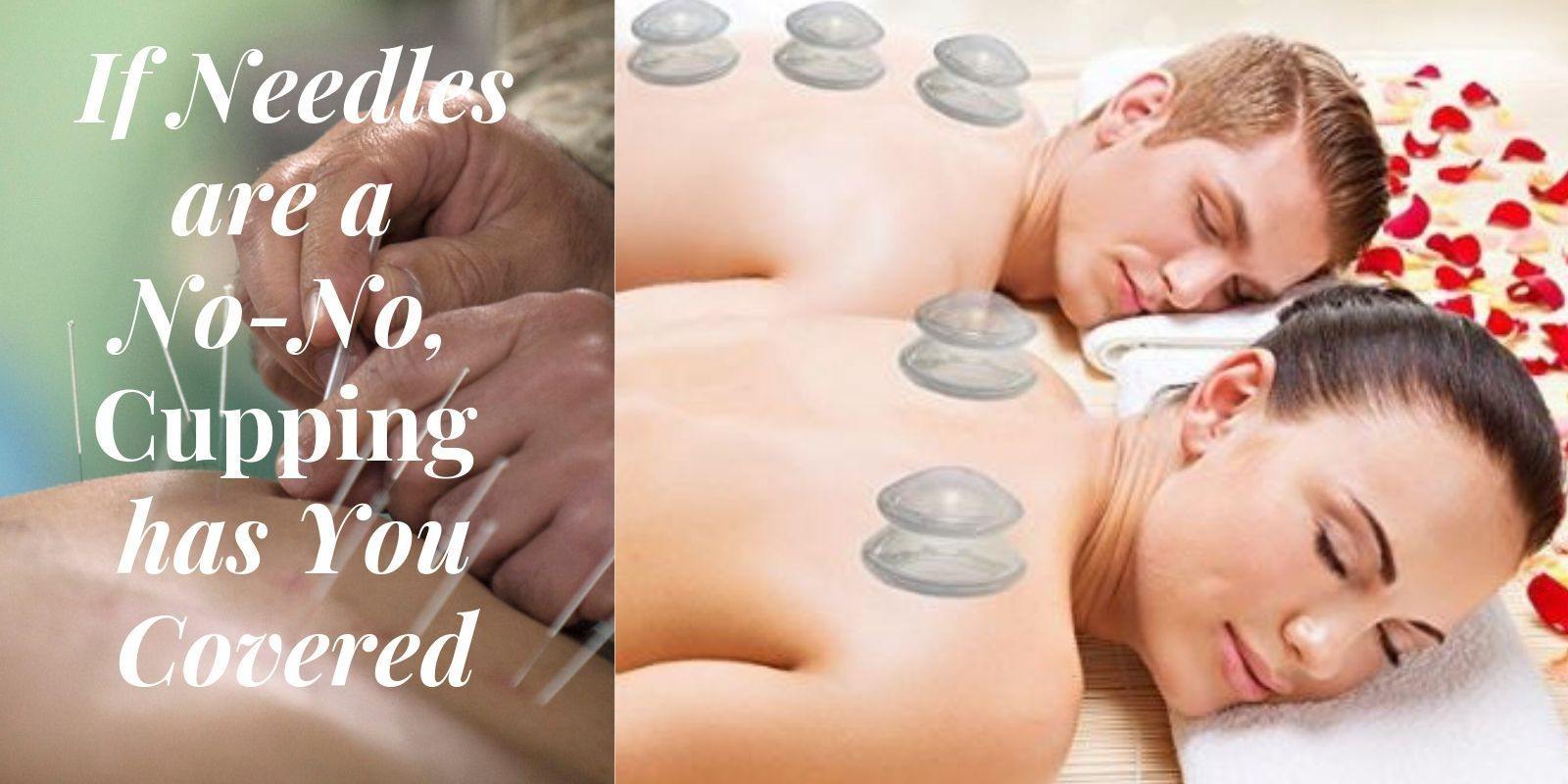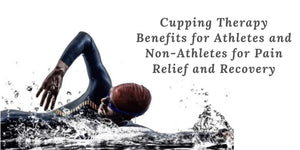In terms of holistic healing techniques, cupping and acupuncture are two of the most well-known options. The benefits of both therapies have been widely proven and can often be an effective alternative or accompaniment to more modern types of medicine. Both methods have been utilized for thousands of years and were founded on the principle that the body has a natural ability to heal by restoring positive energy to areas of illness or injury.
On the surface, the therapies are quite similar. Both are focused on bringing a flow of fresh blood to the site of injury or illness in order to encourage nutrients and oxygen to flood the area, promote healing and cleanse toxins. The theory is to cause a small amount of inflammation to the skin over areas of pain or stress, thus increasing the body’s healing response. In acupuncture, thin needles are inserted into the skin, sometimes with the addition of heat or low-level electricity. With cupping, suction is created when the cups are applied, thus drawing blood toward the skin’s surface.
While both are hugely beneficial types of therapy for things like pain management, depression and stress, and skin health to name a few, there may be some fear attached to the concept of causing damage in order to heal. Acupuncture, while largely painless, may sound particularly intimidating—enduring dozens of needle sticks doesn’t sound very pleasant, regardless of the benefits it offers. Another drawback? Cost. While some health insurance plans may cover holistic therapies, not all do, and incorporating treatment into your regular health regime could be impossible. Fortunately, as more and more people are embracing the benefits holistic healing has to offer, there are alternatives, and cupping is a great option for people who are unable or unwilling to undergo acupuncture.
One of the biggest benefits to cupping is that with the emergence of at-home systems, you can utilize the health advantages from the comfort of your home. While there are many professional cupping centers, treating your body with an at-home kit is definitely a viable option if time or cost is a factor.

So how can cupping provide the same benefits as acupuncture? As mentioned above, the end goal of both treatments are very similar—let’s take a look at some of the most commonly treated issues acupuncturists tackle, and the way a cupping solution can achieve the same results.
Muscle and joint pain – In the case of joint and muscle pain, acupuncture fights inflammation with inflammation, and it’s a highly successful treatment method for chronic pain. If you have joint issues or arthritis, acupuncture can be used to provide relief and help make your movements easier. The needles are used over inflamed joints or muscles to promote healing and relaxation to painful areas.
How can cupping help? – Cupping is, at least, as effective as acupuncture at conquering body aches and pains, and as a bonus, a home treatment can not only help provide relief from pain, but it can also serve as a preemptive strike against chronic issues. Using something like the Ionic Energy Cupping Therapy Set for Trigger Points and Joints can help soothe a variety of joint and muscle issues, relieve swelling, and battle pain associated with arthritis.

Athletic recovery and injury – Not all muscle aches are age-related or due to a specific condition. When it comes to athletes, acupuncture is commonly used to reduce muscle spasms, relieve pain from stretched or strained muscles, and improve circulation throughout the body. Because it also helps relax muscles and keep them healthy and supple, acupuncture can be used as a method to enhance physical performance and agility as well.
How can cupping help? – Cupping has emerged as a fan favorite of popular athletes in recent years, and it’s not surprising. One of the biggest causes of bodily pain stems from damage to the fascia, which is a network of connective tissue that runs throughout the body. Think of it like a sort of cling wrap that helps keep everything in place. The fascia is hugely important, yet most people know very little about its function in the body. When someone talks about having a ‘knot’ in their back or shoulders, it may be an indication that the fascia is inflamed or torn. Cupping works specifically to help separate the layers under the skin and release areas where the fascia is ‘stuck’ and causing pain. Additionally, cupping helps to release lactic acid buildup, another common cause of pain among athletes.
Stress and depression – There are a variety of treatments for our mental health, and one of the easiest ways to release some of the burden on the mind is to relax the body. Acupuncture seems to be particularly effective at providing a very rapid sense of relief for people dealing with mental stress. When the needles are inserted our bodies release endorphins, which are a natural painkiller; the same chemicals that reward us after a particularly good workout. Endorphins have been described as a natural high and can help improve the painful symptoms of depression.
How can cupping help? – The effect of cupping on the body is comparable to a good massage. The cups hug the skin, pulling fresh blood to the surface and improving overall circulation—in the process, you’ll also experience extreme relaxation as your muscles are worked. Cupping can help ease the pain and soreness caused by tension and mental stress that most people don’t even realize they’re carrying around and having the option to do your own treatments at home can be incredibly helpful to someone struggling with depression. Try the Bliss Face and Body Cupping System for an easy way to target both tight spots on the body as well as tension in the face.

In short, both cupping and acupuncture are highly respected and beneficial treatments for a variety of issues, but cost, time, or fear can keep people from exploring the good they can do. An at-home system is the perfect way to break into cupping and find out how it can help you live your best life.






